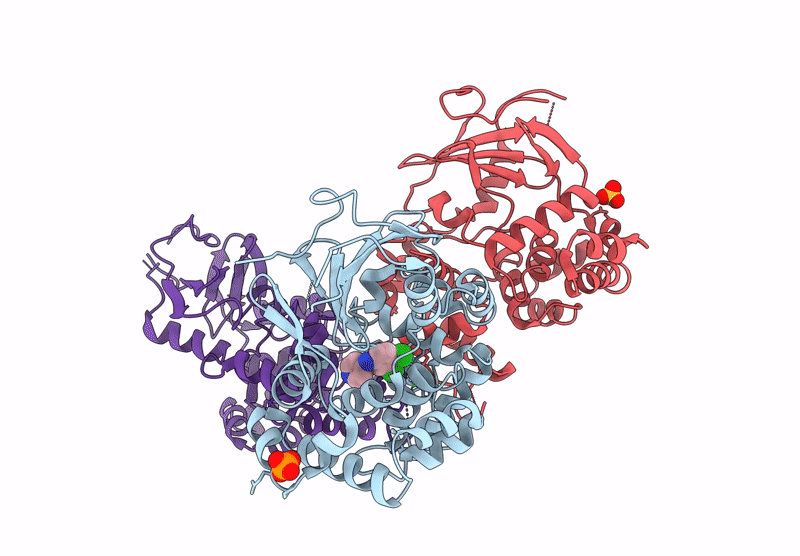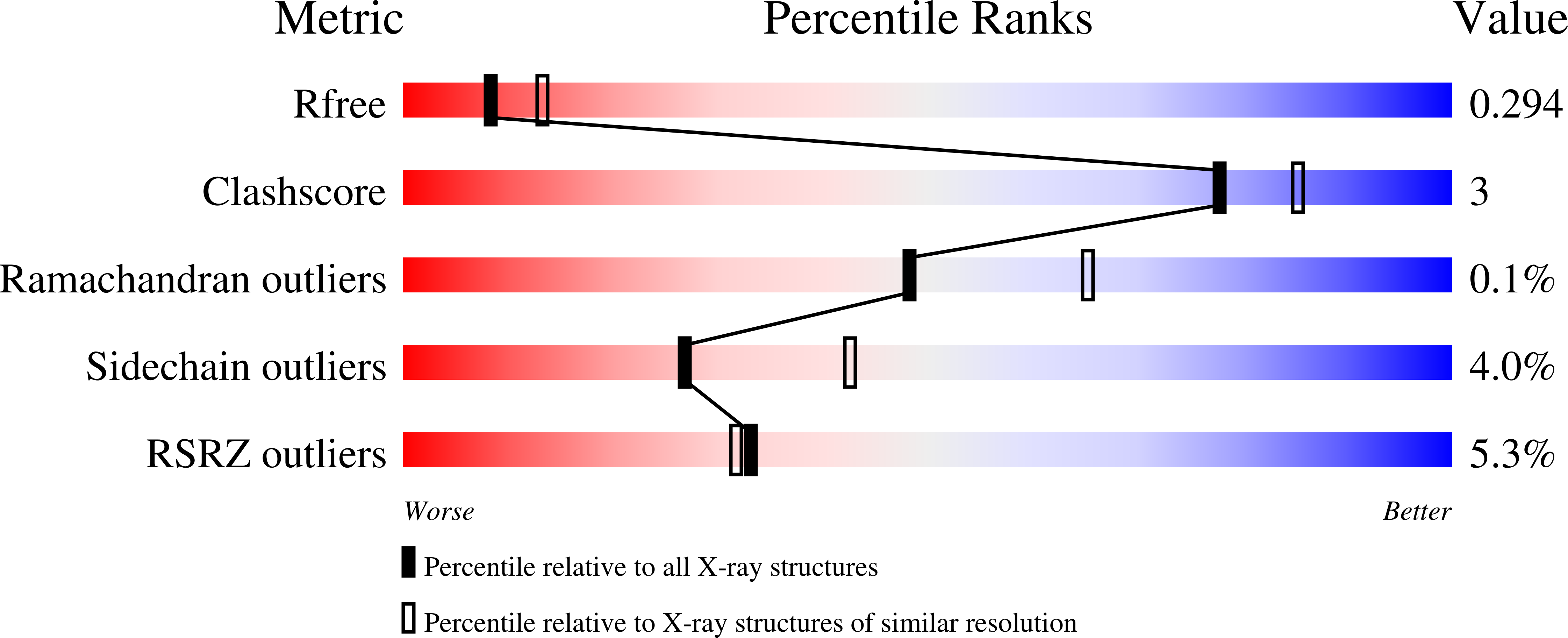
Deposition Date
2024-12-04
Release Date
2025-05-21
Last Version Date
2025-06-25
Entry Detail
PDB ID:
9HLF
Keywords:
Title:
Structure of the mouse 8-oxoguanine DNA Glycosylase mOGG1 in complex with ligand TH14445
Biological Source:
Source Organism:
Mus musculus (Taxon ID: 10090)
Host Organism:
Method Details:
Experimental Method:
Resolution:
2.64 Å
R-Value Free:
0.29
R-Value Work:
0.24
R-Value Observed:
0.24
Space Group:
P 21 21 21


